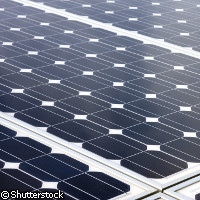Annual photovoltaics production on the rise, JRC reports
The European Commission's Joint Research Centre (JRC) reports a considerable rise in worldwide photovoltaics production. Across the globe, production volume in 2008 increased by 80% as compared to 2007. This resulted in an output of 7.3 gigawatts (GW), the JRC concludes, in its newly published eighth Annual Photovoltaics Status Report. Europe's installed solar cell capacity follows the general trend, albeit at a slightly slower rate: it increased threefold to 4.8 GW. This was significantly influenced by the Spanish market, which augmented its installed capacity fivefold from 560 megawatts (MW) in 2007 to between 2.5 GW and 2.7 GW in 2008. This is mainly due to several successful demonstration projects. Further leading photovoltaics markets include Germany (1.5 GW), the US (342 MW), South Korea (282 MW), Italy (258 MW) and Japan (230 MW). Notwithstanding these figures, the photovoltaics sector is still comparatively small - in total, it accounted for about 0.35% of Europe's electricity consumption in 2008. Due to the economic crisis, investment in renewable energies and energy efficiency slowed significantly in late 2008 (-23% in the fourth quarter) and early 2009 (another -47% in the first quarter). However, compared to the beginning of 2009, the second quarter showed strong recovery, with investments up by 83%. Europe's solar cell production rose from 1.1 GW to 1.9 GW. Europe is second only to China, which upped its solar cell manufacturing output to an annual 2.4 GW. The report assigns this effect to the Chinese government's significant financial support for the country's renewable energies industry. While most G20 countries have devised economic recovery plans which - in one way or another - contain measures to stimulate green investment, the report points out that 'compared to the new Chinese Energy Revitalisation Plan under discussion, the pledged investments are marginal. If no changes are made, China, which now strongly supports its renewable energy industry, will emerge even stronger after the current financial crisis.' The author foresees that China will produce 32% of photovoltaic modules by 2012, should this trend continue. As part of their economic recovery package, the G20 have earmarked EUR 135 billion for 'green stimulus' measures, out of which EUR 25.2 billion will go into renewable energies and EUR 15.8 billion into research and development (R&D) between now and 2013. China's Energy Revitalisation Plan, on the other hand, sets aside EUR 309 billion for investments into renewable energies and EUR 436 billion for smart energy grids investments. Currently, 85% of photovoltaic module production is based on crystalline silicon technology. However, the industry has recently experienced a silicon shortage, and production is expensive. Due to the recent development of turnkey production lines for thin-film solar cells - usually less efficient, but considerably cheaper in manufacturing - thin-film solar modules have now reached a market share of between 12% and 14%, the report states. 'Photovoltaics is a key technology option to realise the shift to a decarbonised energy supply,' the report emphasises. 'The solar cell resources in Europe and worldwide are abundant and cannot be monopolised by one country. Regardless for what reasons and how fast oil price and energy prices increase in the future, photovoltaics and other renewable energies are the only ones to offer a reduction of prices rather than an increase, in the future.'



